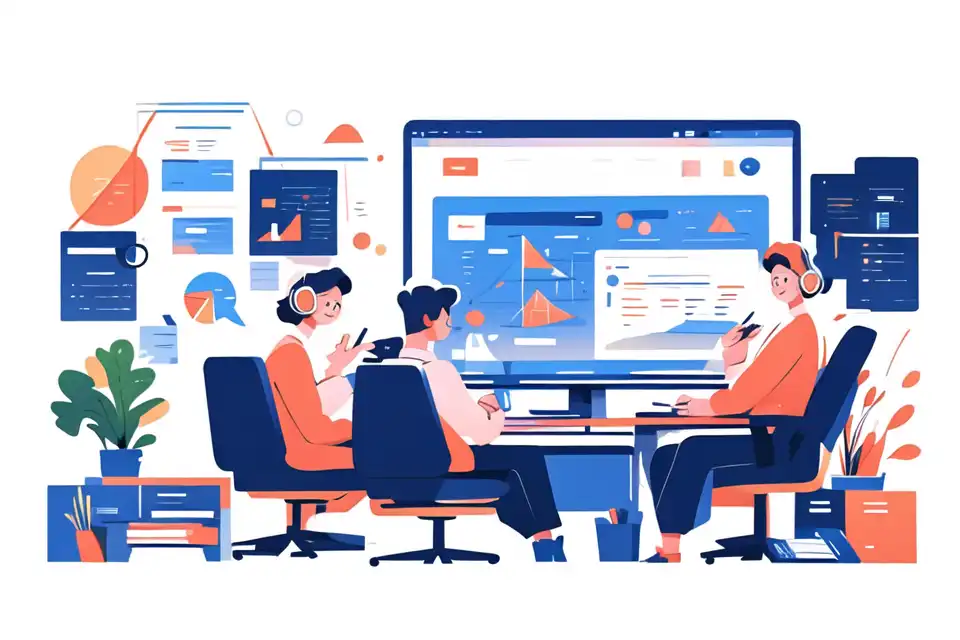Educational Nanotechnology
Learn about the top tips and strategies in educational nanotechnology
Try Lark for Free
What is Educational Nanotechnology?
Educational nanotechnology refers to the incorporation of nanotechnology principles and applications into educational programs. Nanotechnology, the science of manipulating matter at the atomic and molecular scale, offers immense possibilities for innovation in various fields, including education.
The Role of Nanotechnology in the Educational Context
Nanotechnology serves as a valuable tool for enhancing teaching and learning experiences. It aids in presenting complex scientific concepts in an understandable, engaging manner, thereby fostering a deeper understanding and stimulating curiosity among students.
The Growing Importance of Educational Nanotechnology
As nanotechnology continues to permeate various industries, the need for incorporating it into the education system is becoming increasingly apparent. This integration not only prepares students for future careers but also contributes to the advancement of this crucial field.
Key Trends and Statistics on Educational Nanotechnology
The educational nanotechnology market is on an upward trajectory. According to a report by Grand View Research, the global nanotechnology market is projected to reach $125.88 billion by 2024, indicating ample opportunities for educational applications.
Unlock the power of Lark to elevate your business operations. Discover actionable strategies and best practices in our comprehensive guide.
The impact of educational nanotechnology
Enhancing Teaching and Learning through Nanotechnology
Nanotechnology facilitates the visualization and manipulation of nanoscale phenomena, thereby enhancing the teaching and learning of complex scientific concepts. It allows for a hands-on, interactive learning experience, making abstract ideas tangible and understandable.
Boosting Student Engagement and Learning Outcomes
By making learning visual and interactive, nanotechnology can boost student engagement and improve learning outcomes. It stimulates curiosity, encourages exploration, and promotes deeper understanding.
The Role of Lark in Facilitating Nanotechnology Education
Lark, with its robust suite of collaboration and communication tools, plays a pivotal role in facilitating nanotechnology education. It allows educators to effectively communicate complex nanotechnology concepts, share relevant resources, and engage students in collaborative learning activities.
Related:
Education Solution | LarkLearn more about Lark can help you with everything mentioned so far in the article.
Implementing educational nanotechnology
Integrating Nanotechnology into the Classroom
Successful integration of nanotechnology in the classroom requires careful planning and execution. This includes understanding the basics of nanotechnology, training educators, and gradually incorporating nanotechnology concepts into the curriculum.
Necessary Tools and Resources for Nanotechnology Education
Tools such as nanoscale models, simulations, and visualization software are crucial for effective nanotechnology education. Additionally, platforms like Lark offer a conducive environment for collaboration, discussion, and resource sharing.
How Lark Supports the Implementation of Educational Nanotechnology
Through its various features like video conferencing, messaging, document collaboration, and calendar management, Lark provides a comprehensive platform for implementing nanotechnology education. It enables seamless communication, collaboration, and resource sharing, which are critical for effective learning.
Detailed examples of educational nanotechnology
Implementing nanotechnology in stem education
Implementing nanotechnology in stem education
In STEM education, nanotechnology can be used to provide a more practical, hands-on approach to learning. For instance, nanoscale models can be used to teach students about atomic structures, chemical reactions, and material properties.
Nanotechnology in medical education
Nanotechnology in medical education
In medical education, nanotechnology can help students understand cellular processes, drug delivery mechanisms, and disease diagnosis and treatment at the nanoscale. It can also enable the visualization and simulation of complex medical procedures.
Nanotechnology in environmental education
Nanotechnology in environmental education
Nanotechnology can play a significant role in environmental education by providing insights into the nanoscale processes involved in environmental systems, pollution, and sustainability. It can also aid in the exploration of nanotechnology-based solutions for environmental issues.
Learn more about Lark can help you with everything mentioned so far in the article.
Challenges and solutions in educational nanotechnology
Potential Obstacles in Adopting Nanotechnology in Education
The adoption of nanotechnology in education might face challenges such as the lack of trained educators, limited resources, and resistance to change. Additionally, the abstract nature of nanoscale phenomena can make it difficult to comprehend and teach.
Overcoming Challenges with Practical Strategies
These challenges can be overcome through effective training of educators, investment in necessary tools and resources, and the gradual integration of nanotechnology concepts into the curriculum. The use of visual and interactive learning methods can also help in making nanoscale phenomena more comprehensible.
Lark's Solutions for Common Nanotechnology Education Challenges
Lark's comprehensive suite of tools provides an effective solution for many common challenges in nanotechnology education. It facilitates seamless communication, enhances collaboration, and enables easy sharing of resources, thereby simplifying the teaching and learning of complex nanotechnology concepts.
The future of educational nanotechnology
Emerging Trends in Educational Nanotechnology
Emerging trends in educational nanotechnology include the increased use of virtual and augmented reality for visualizing nanoscale phenomena, the integration of nanotechnology into various academic disciplines, and the growing emphasis on hands-on, exploratory learning.
Predictions for Nanotechnology's Impact on Education
As nanotechnology continues to advance, its impact on education is expected to grow. It has the potential to revolutionize teaching and learning methods, enhance student engagement and learning outcomes, and prepare students for future careers in a nanotechnology-driven world.
Lark's Role in Shaping the Future of Nanotechnology Education
As a leading collaboration suite, Lark is poised to play a significant role in shaping the future of nanotechnology education. By facilitating effective communication, collaboration, and resource sharing, Lark can enable educators and students to harness the full potential of nanotechnology in education.
Learn more about Lark can help you with everything mentioned so far in the article.
Do's and don'ts of implementing nanotechnology in education
| Do's | Don'ts |
|---|---|
| Invest in proper training for educators | Don't disregard the importance of educator training |
| Integrate nanotechnology gradually | Don't rush the integration process |
| Use Lark's tools to facilitate learning | Don't neglect the tools and resources available |
Step-by-step guide to integrating nanotechnology in education
Step 1: Understanding the Basics of Nanotechnology
Step 2: Training the Educators
Step 3: Gradual Integration into the Curriculum
Step 4: Utilizing Lark for Enhanced Learning
Learn more about Lark can help you with everything mentioned so far in the article.
Conclusion
As we've explored, nanotechnology holds immense potential for transforming education. It enhances teaching and learning experiences, boosts student engagement and learning outcomes, and prepares students for future careers in a nanotechnology-driven world. The journey towards integrating nanotechnology in education may present challenges, but with careful planning, effective strategies, and the right tools like Lark, these can be successfully navigated. As we look to the future, the importance of nanotechnology in education only seems set to grow, and with it, the role of platforms like Lark in facilitating this exciting journey. So, let's embrace the power of nanotechnology in education and harness its full potential for a brighter, better future.
Unlock the power of Lark to elevate your business operations. Discover actionable strategies and best practices in our comprehensive guide.








